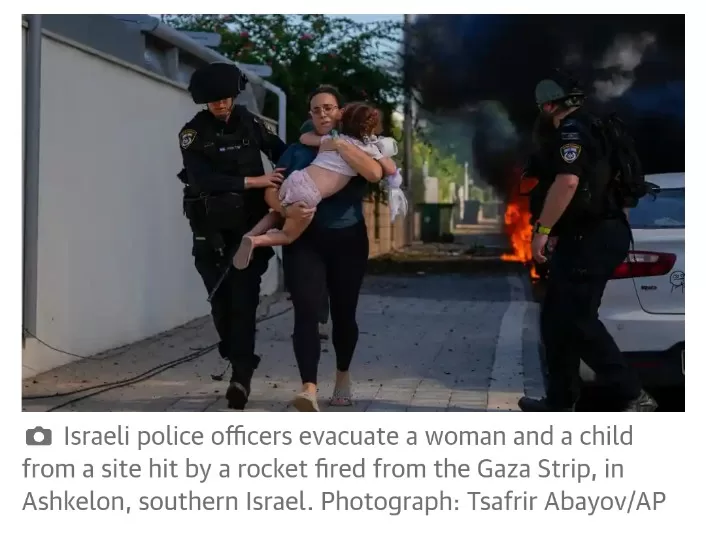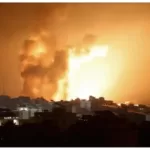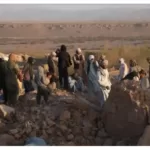In a startling and unprecedented turn of events, Palestinian militants, identified as members of the militant group Hamas, launched a barrage of rockets into Israel. This act, previously unimaginable, unfolded before the eyes of a divided audience across Israel and the occupied Palestinian territories, leaving communities in a state of disbelief.
The scenes depicted in the media were nothing short of surreal. Footage showed Palestinian gunmen breaching the formidable barriers that had confined the Gaza Strip’s 2.3 million inhabitants for over a decade. Equally astonishing were images and videos capturing Israeli civilians, dazed and bewildered, seeking refuge in secure rooms or being forcibly transported into Gaza by the Israel Defence Forces (IDF) with their hands bound in zip ties, seemingly as bargaining chips.
Khaled al-Taweel, a 49-year-old resident of central Gaza, aptly summarized the sentiment: “If you asked any Palestinian what the best-case scenario would be to end the occupation, they would never say something like this. And if you asked an Israeli what the worst-case scenario would be, they would never say something like this. It feels like a movie. At the Erez crossing [between Gaza and Israel], that’s where we stand to get searched, not the other way around.”
For both Palestinians and Israelis, this unforeseen chapter has plunged them into a tunnel of uncertainty. The audacious actions of Hamas operatives included hang gliding into Israel, a Gaza journalist infiltrating Israeli territory to deliver a report for Palestinian television, and even an elderly Israeli woman, visibly disoriented, being chauffeured around Gaza’s streets in a golf buggy. It was a day that defied all expectations.
Meanwhile, Israelis were glued to their television screens, witnessing the plight of their fellow citizens in the southern regions of the country. Locked in panic rooms from dawn till dusk, these civilians pleaded for help. “I am asking for the army to be here; people are begging for forces to be here,” implored Daniel Rahamim, a 68-year-old resident of Nahal Oz, a border town. The desperate cry for assistance echoed throughout the region, as dozens of Israeli civilians remained hostage within their own homes. Both Hamas and Islamic Jihad, a smaller militant faction in the area, claimed to have taken 57 Israelis—some alive, some not—into the Mediterranean enclave.
Videos circulating, though unverified, depicted heart-wrenching scenes of mothers resisting masked gunmen’s attempts to separate them from their children. In another instance, a young woman was forcibly dragged into the backseat of a stolen IDF Jeep, her hair pulled mercilessly. In the backdrop of these chilling episodes, partygoers at a rave event were captured fleeing across fields as ominous sounds reverberated.
As the hours passed since the initial reports of Hamas operatives infiltrating Gaza—an attack with no recent precedent—residents in Israel’s south relayed accounts of ongoing gun battles in their towns and kibbutzim. The sluggish response from both the army and police left Israelis shocked and infuriated. One resident in a southern kibbutz lamented, “We are being slaughtered. There is no army. It has been hours. People are begging for their lives.”
This startling development has sent shockwaves through the region, underscoring the need for swift and effective responses to maintain stability and security.




